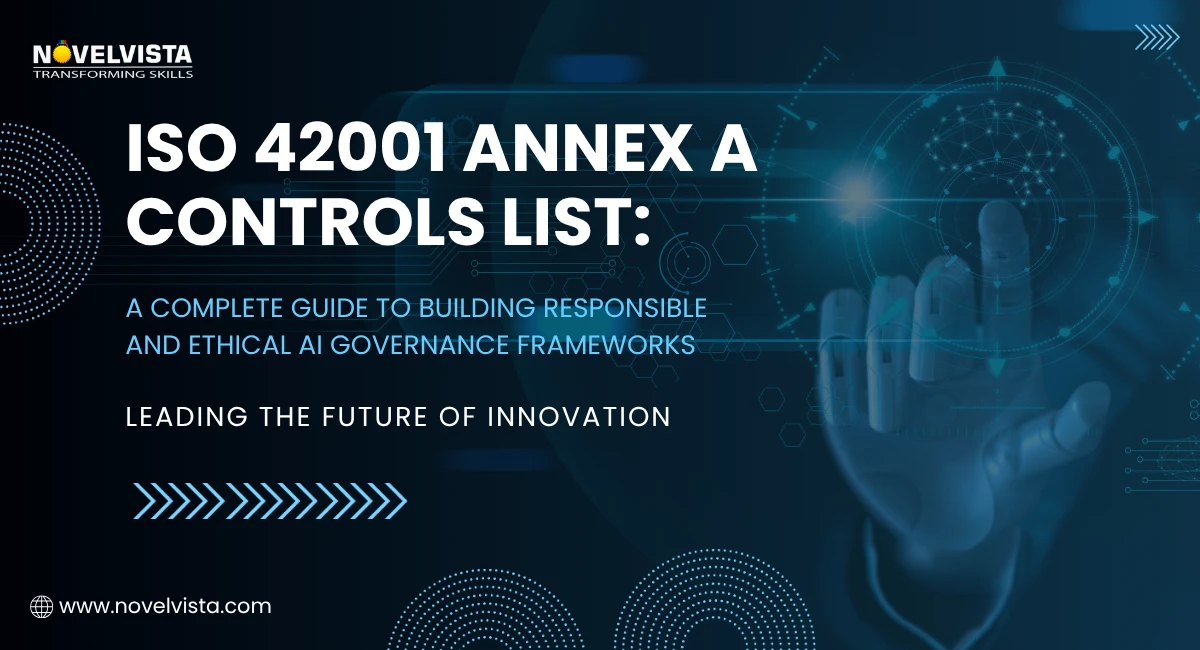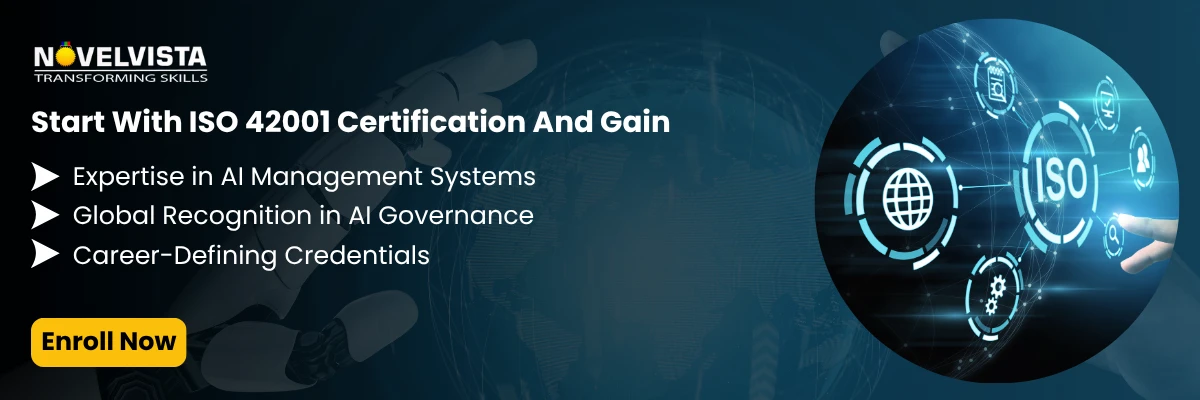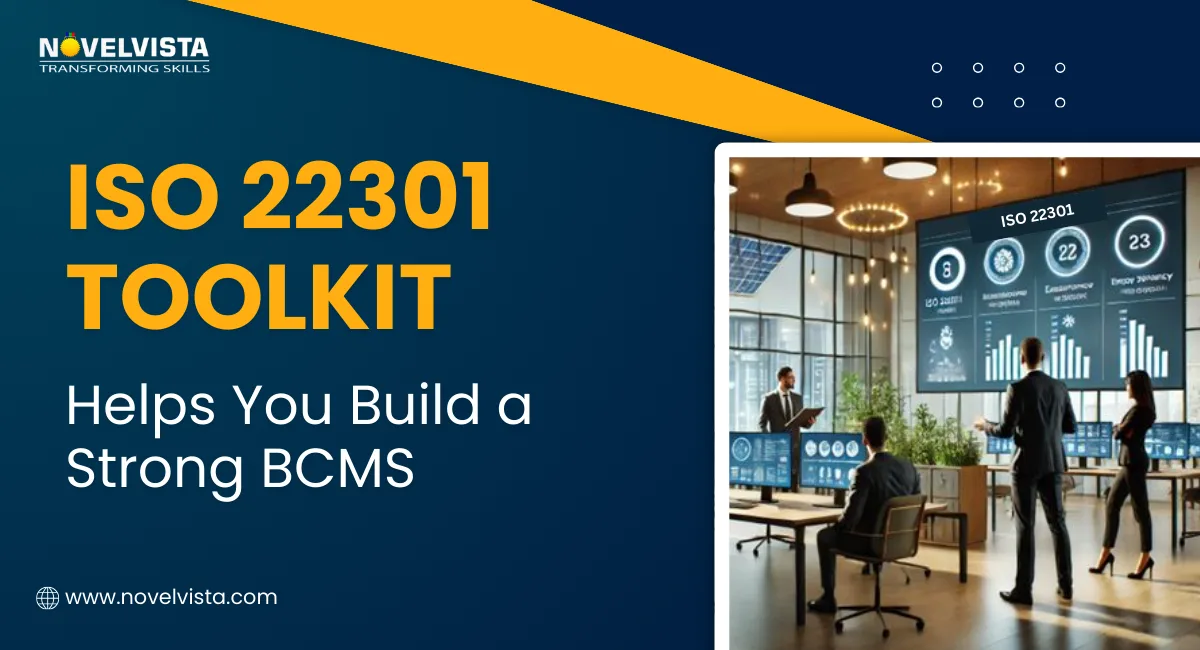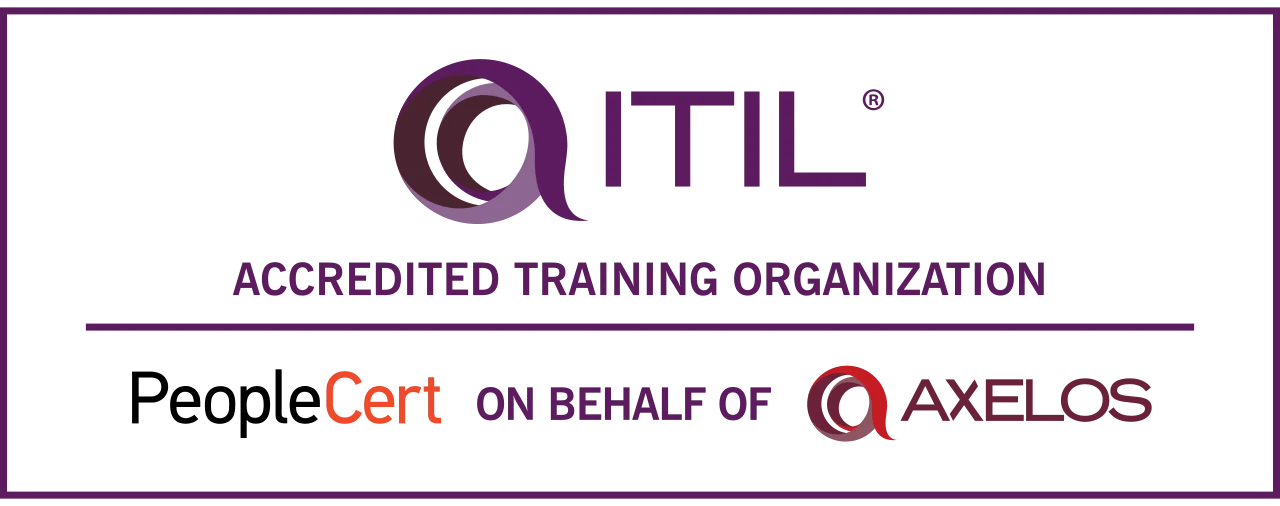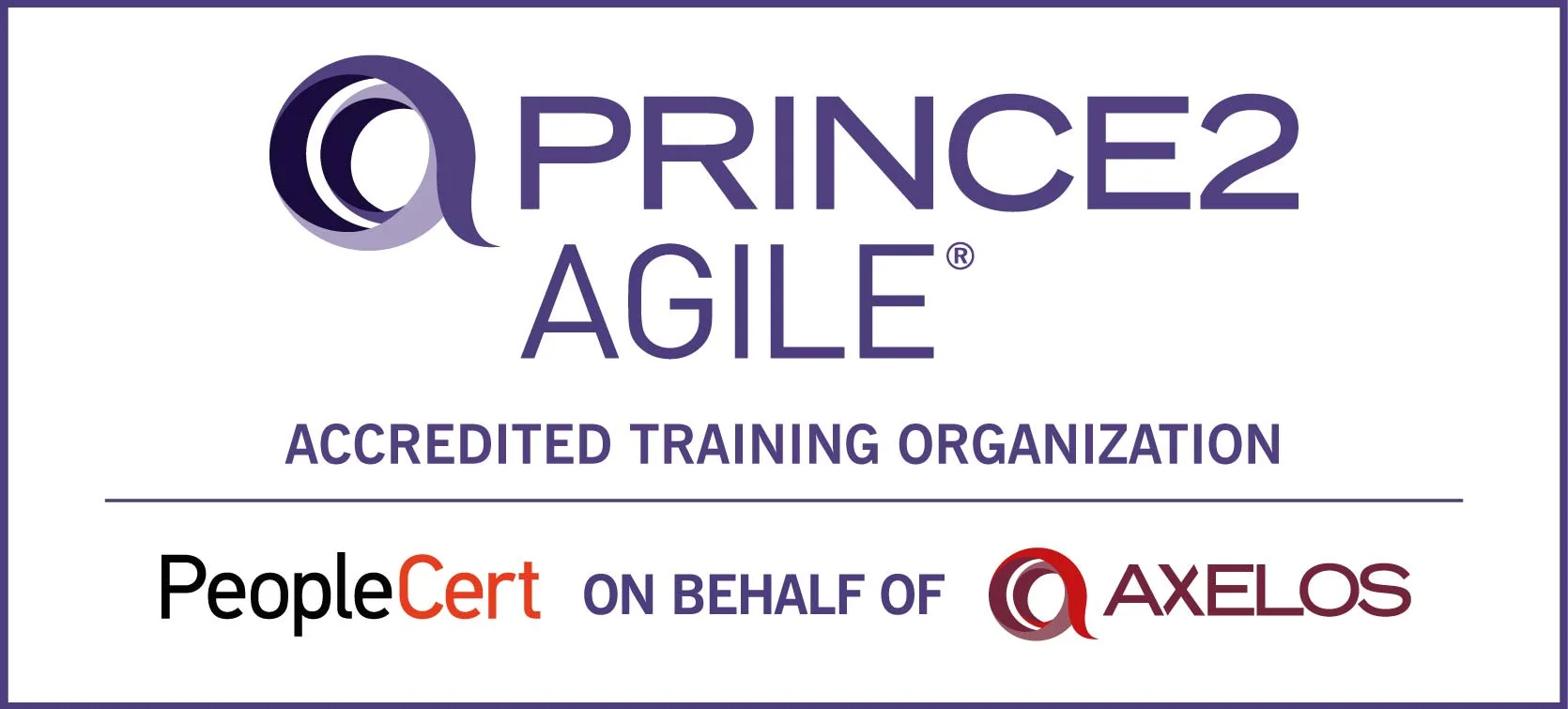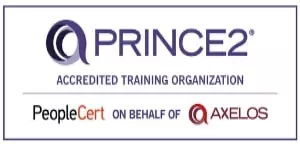AI systems can deliver amazing results — but unchecked, they can also create bias, compliance risks, and reputational damage. The ISO 42001 Annex A Controls List keeps your AI on the right track.
ISO 42001 provides a structured approach to ethical AI management, helping organizations identify risks, implement controls, and ensure compliance. Annexes A–D offer detailed guidance, with Annex A being the backbone for operationalizing AI governance, risk management, and ethical standards. For a deeper dive, see our comprehensive ISO 42001 blog.
What Are the Annexes in ISO 42001?
In ISO standards, annexes provide detailed, actionable guidance supporting the main clauses. For ISO 42001, annexes outline specific controls, risk management practices, and implementation tips to ensure AI systems remain ethical, transparent, and accountable.
Annexes are designed to help organizations of all sizes and sectors manage AI-related risks while aligning with business objectives. Following these annexes systematically makes auditing, certification, and continual improvement far more effective.
Download: ISO 42001 Framework Quick Reference Guide
Understand the complete ISO 42001 structure in minutes.
Learn how AI governance, ethics, and compliance
come together.
ISO 42001 Annexes Explained (Annex A to D)
ISO 42001 Annex A Controls List
A.1 General
These controls set the foundation for building an AI governance structure. They help organizations design, operate, and monitor AI systems responsibly while aligning with overall business goals.
A.2 Policies Related to AI
Objective: Provide clear management direction for developing and using AI responsibly.
- AI Policy (A.2.2): Organizations should have a documented policy guiding how AI systems are created, managed, and maintained.
- Alignment with Other Policies (A.2.3): AI governance must complement existing corporate and information security policies.
- Policy Review (A.2.4): Regular reviews ensure AI policies stay effective, relevant, and aligned with emerging technologies and risks.
A.3 Internal Organization
Objective: Define clear accountability and ownership for AI activities within the organization.
- Roles and Responsibilities (A.3.2): Every AI initiative must have defined owners responsible for its ethical and operational compliance.
- Reporting Concerns (A.3.3): A proper mechanism should exist for employees to raise concerns or issues related to AI system behavior or impact.
A.4 Resources for AI Systems
Objective: Ensure all AI-related resources are identified and managed effectively.
- Resource Documentation (A.4.2): Maintain records of all technical, data, and human resources linked to AI systems.
- Data Resources (A.4.3): Understand what data powers your AI and how it’s collected and used.
- Tooling and Computing Resources (A.4.4–A.4.5): Document the tools, platforms, and computing power supporting AI operations.
- Human Resources (A.4.6): Ensure team members working on AI have the right skills, competence, and training.
A.5 Assessing Impacts of AI Systems
Objective: Evaluate how AI systems affect individuals, groups, and society throughout their lifecycle.
- Impact Assessment Process (A.5.2): Establish a process to identify possible outcomes—positive or negative—of AI deployment.
- Documentation (A.5.3): Maintain proper records of all impact assessments for traceability and accountability.
- Individual and Societal Impact (A.5.4–A.5.5): Assess how AI influences users, employees, and communities, ensuring fairness and transparency.
A.6 AI System Lifecycle
Objective: Define how AI systems are developed, validated, deployed, and maintained responsibly.
- Development Objectives (A.6.1.2): Set clear ethical and functional goals guiding responsible AI development.
- Design and Development Process (A.6.1.3): Follow documented procedures ensuring AI systems meet safety and compliance standards.
- Lifecycle Requirements (A.6.2.2–A.6.2.6): Specify steps for requirement gathering, testing, deployment, and ongoing monitoring.
- Technical Documentation (A.6.2.7): Keep necessary system documentation ready for regulators, users, and partners.
- Event Logs (A.6.2.8): Record AI events to support audits, investigations, and performance reviews.
A.7 Data for AI Systems
Objective: Manage AI data effectively to maintain quality, integrity, and accountability.
- Data Management (A.7.2): Create processes for collecting, storing, and updating AI-related data.
- Data Acquisition (A.7.3): Clearly define the sources and selection criteria for datasets used in AI training and operations.
- Data Quality (A.7.4): Ensure datasets meet defined quality standards to reduce bias and inaccuracies.
- Data Provenance (A.7.5): Track the origin and history of data used throughout the AI lifecycle.
- Data Preparation (A.7.6): Document how data is cleaned, processed, and prepared for AI development.
A.8 Information for Interested Parties of AI Systems
Objective: Ensure all relevant stakeholders have the right information to understand and evaluate AI risks and impacts.
- System Documentation & User Information (A.8.2): Provide users with clear system documentation explaining AI functionality, usage, and limitations.
- External Reporting (A.8.3): Enable channels for external parties to report any adverse AI-related incidents or impacts.
- Incident Communication (A.8.4): Define a communication plan to inform users promptly about AI incidents or irregularities.
- Information Sharing Obligations (A.8.5): Outline how and when information about AI systems must be shared with regulators or stakeholders.
A.9 Use of AI Systems
Objective: Promote the responsible and ethical use of AI systems in alignment with organizational policies.
- Responsible Use Processes (A.9.2): Define and document the procedures ensuring AI use aligns with ethical and operational standards.
- Use Objectives (A.9.3): Establish goals that guide the organization toward fair, transparent, and compliant AI usage.
- Intended Use (A.9.4): Ensure AI systems are used strictly for their intended purpose and within defined parameters.
A.10 Third-Party and Customer Relationships
Objective: Maintain accountability and risk clarity when external parties are involved in the AI lifecycle.
-
Allocating Responsibilities (A.10.2): Clearly define how AI-related duties are shared between partners, suppliers, and customers.
-
Supplier Management (A.10.3): Verify that all supplier-provided AI components comply with responsible AI development principles.
-
Customer Considerations (A.10.4): Ensure customer needs and ethical expectations are reflected in AI design and deployment decisions.
Annex B – Implementation Guidance
Annex B supports the ISO 42001 Annex A Controls List by providing practical advice on applying the Annex A controls across the AI lifecycle stages. It includes guidance on process integration, policy enforcement, and control verification to make risk management actionable.
Annex C – Potential Organizational Objectives & Risks
Annex C outlines examples of AI-related objectives and risks to guide implementation:
- Objectives include improving decision-making efficiency, enhancing customer personalization, and maintaining regulatory compliance.
- Risks include biased outcomes, data breaches, non-compliance with ethical standards, and reputational damage.
This annex helps organizations tailor controls to specific operational contexts.
Annex D – Domain-Specific Standards
Annex D provides AI governance standards for specific industries and sectors, such as healthcare, finance, and manufacturing. Organizations can align their AI Management System (AIMS) with sector-specific regulations while applying Annex A controls.
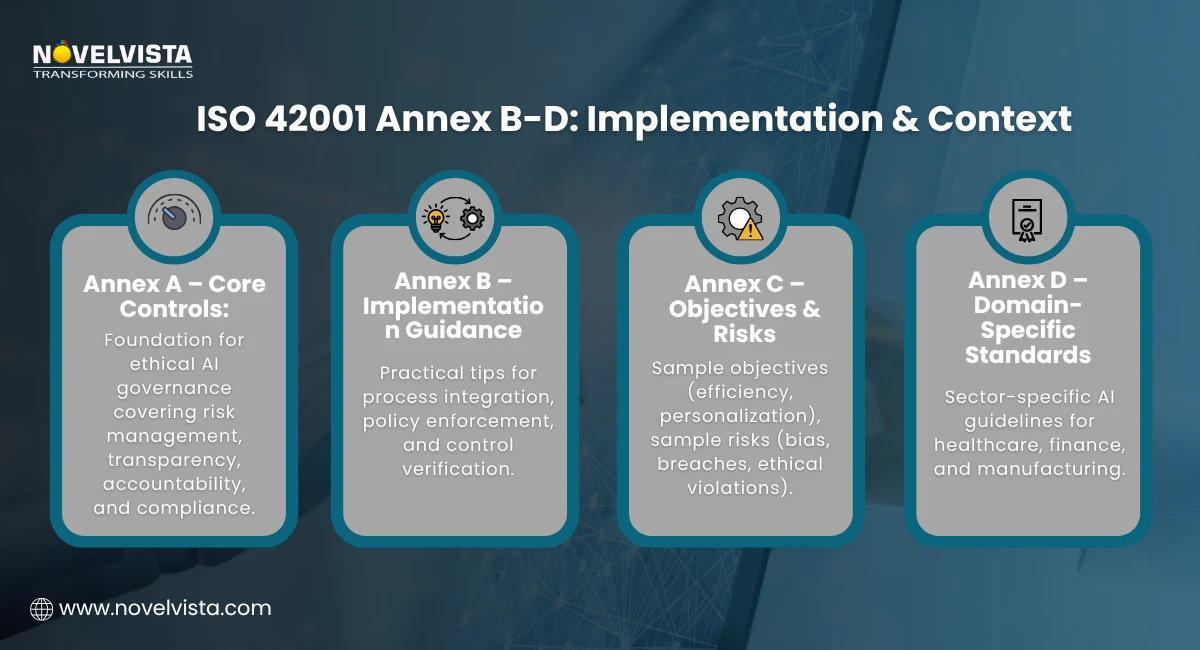
Core Objectives of Annex A Controls
Implementing Annex A controls focuses on:
- Ethical AI governance and compliance – Ensuring AI systems adhere to organizational values, ethical principles, and regulatory requirements.
- Risk identification, assessment, and mitigation – Proactively managing AI risks to prevent harm and operational issues.
- Accountability and transparency – Clearly defining responsibilities and making AI decision-making understandable.
Real-World Applications of Annex A Controls
Organizations across industries apply Annex A controls to:
- Detect and prevent algorithmic bias in hiring platforms, ensuring fair candidate evaluation.
- Monitor AI in financial services for fraud detection while maintaining privacy compliance.
- Govern healthcare AI diagnostics to enhance patient safety and ethical treatment.
- Apply robust auditing procedures in automated decision-making systems to maintain transparency and accountability.
These examples illustrate how the ISO 42001 Annex A Controls List actively mitigates ethical, operational, and regulatory risks.
Benefits of Implementing Annex A Controls
-
Increased trust and transparency – Stakeholders gain confidence in AI system reliability and fairness.
-
Strengthened AI risk management and compliance – Proactively addresses regulatory and operational vulnerabilities.
-
Operational efficiency and better decision-making – Streamlines AI processes, reducing errors and improving outcomes.
-
Enhanced accountability and ethical practices – Assigns clear responsibilities and promotes ethical governance throughout the AI lifecycle.
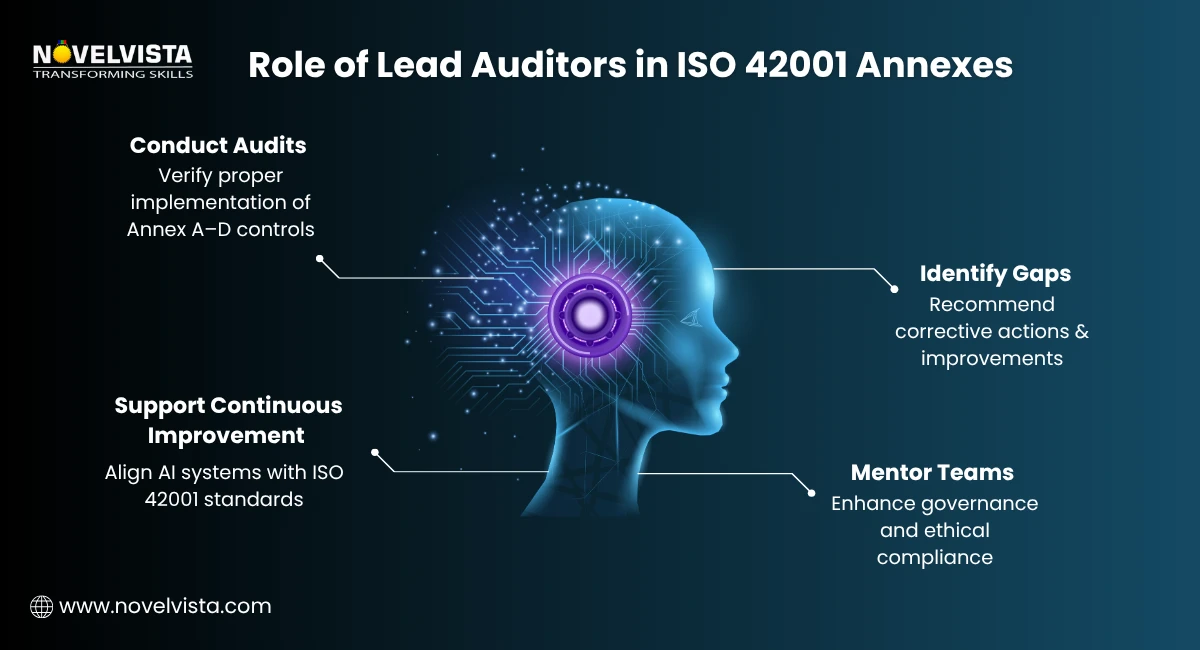
Role of the ISO 42001 Lead Auditor in the Annexes
Lead auditors play a pivotal role in ensuring Annex A–D compliance:
- Conduct audits to verify proper implementation of controls.
- Identify gaps and recommend corrective actions.
- Support continuous improvement and alignment with ISO 42001 standards.
- Mentor teams to enhance organizational AI governance and ethical compliance.
Conclusion
The ISO 42001 Annex A Controls List provides organizations with a structured, practical approach to manage AI ethically, mitigate risks, and achieve compliance. By following these controls, companies can maintain accountability, transparency, and operational excellence, fostering trust among stakeholders. Lead auditors ensure the correct application of these controls, helping organizations navigate the complex landscape of AI governance effectively.
Next Step:
Enhance your career and practical knowledge with NovelVista’s ISO 42001 Lead Auditor Training Course. Gain hands-on experience implementing Annex A controls, performing risk assessments, and preparing AI systems for certification readiness. Build your expertise in ethical AI governance while positioning yourself as a certified leader in AI compliance.
Frequently Asked Questions
Author Details

Akshad Modi
AI Architect
An AI Architect plays a crucial role in designing scalable AI solutions, integrating machine learning and advanced technologies to solve business challenges and drive innovation in digital transformation strategies.
Course Related To This blog
ISO 42001 Lead Auditor
Confused About Certification?
Get Free Consultation Call

